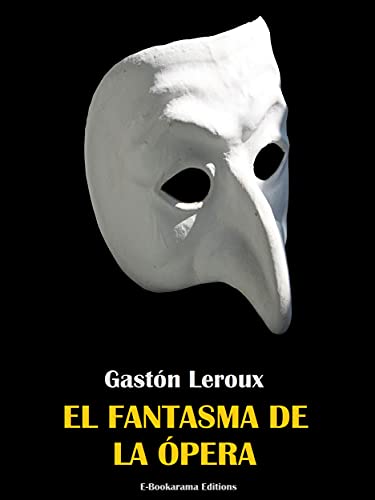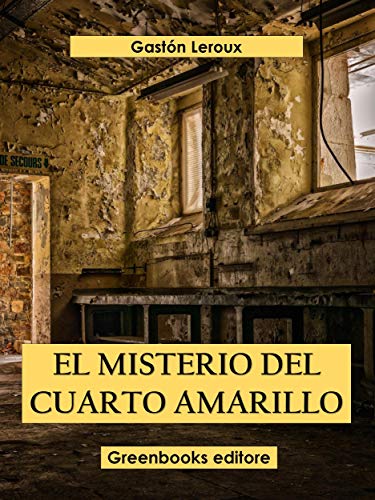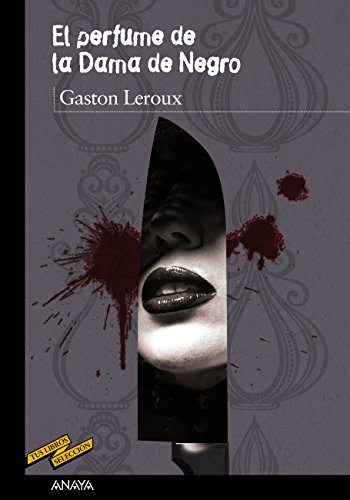What of Gaston Leroux with literature it seems like a tangential encounter, almost a collateral dedication. His main motivation in life was directed towards journalism, social reporting, denunciation and the search for lost causes through a job as a reporter that moved him through many different countries.
For everything else, perhaps to face his own fears of his intrepid travels, reports and complaints, Gastón Leroux wrote novels and stories of mystery or of terror. And given that projection in the most disturbing fictional narrative, which ended up bearing fruit in more than 40 books, it would mean that literature really ended up being its escape valve.
Author of the well-known gothic novel The Phantom of the Opera, Leroux spread throughout his work an imaginary of detailed scenarios, of course theatrical, histrionic in their reflection of the dark side of the human soul and fear as a nascent element of subjective phobias more than the real world itself.
Within this subjective intention, loaded with images and symbols, Leroux introduces us to those areas of gothic terror to mislead us between tricks and tricks, finally surprising us with the disconcerting truth, in which we usually discover that the only monsters grow from within our impressions.
Horror novels but also some police works with which he unleashed a taste for this genre that in its beginnings always presented an investigation between gruesome events ...
3 best books by Gastón Leroux:
The Phantom of the Opera
Due to its repercussion, it would be worth mentioning this novel as the greatest work of the author. But the absolute adjustment of the theatrical symbol as an imaginary space and at the same time close, tangible, also has a lot to do with it.
In those magical musical interpretations that are operas, we approach the tragic and the comic from all the senses. The absolute beauty and paradoxical spectral presence of the fear-generating ghost. Christine, the new diva who captivates all viewers, approaches the dark world of the ghost, in the catacombs of the Paris Opera.
And there Christine discovers that behind the disfigured face of the ghost is the genius capable of creating sublime music. You can love that captivating music, but Christine loves her fiancé Raoul.
In that dichotomy of love on either side of the music, sprinkling the matter with nuances of passion and devotion, this story moves that ends as the drama that it always aimed to be.
The mystery of the yellow room
Leroux's foray into the detective genre reaches its peak in this novel. Mathilde Stangerson, the unmarried daughter of a famous doctor retires to sleep in her room in the sobro castle, the unfortunate night in which everything happens.
His door is locked, which prevents the quickest help from the screams and gunshots heard in the middle of the night. When the doctor and his assistant manage to enter the young woman is on the floor dying, clearly attacked by someone who is no longer in the room.
The problem is that the door, as we say, was locked and the window kept its lattice intact. A sum of strange clues completely baffle locals and strangers.
The young woman is recovering but her testimony moves in an ambiguity that does not end up contributing anything, in any case greater confusion.
Several researchers face the dilemma from different methodological fronts but only Rouletabille, a young journalist is tying up the ends of the matter, an intricate justification that until the day of the trial he will not be able to fully reveal, if he succeeds ...
The perfume of the lady in black
The second part of The Mystery of the Yellow Room must have been a challenge for the author, since the first part already had enough ramifications that could present problems when linking a sequel.
But the good Leroux would have enough patience and the precise scheme to advance in this continuation focused absolutely on the young and sagacious Rouletabille.
To be able to undertake this reading, the regression to the first work is essential, something that today does not present a major problem, since the editions are usually done jointly.
The necessary interlocutor between the reader and Rouletabille is Sainclair, who is giving a good account of everything that happened with this lady in black and the details to which we must pay full attention to finally unravel the great mystery of this lady, and of the murderer who round the characters ...



